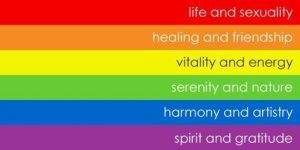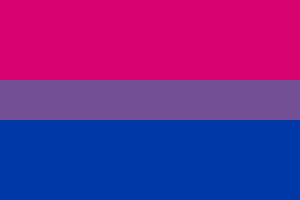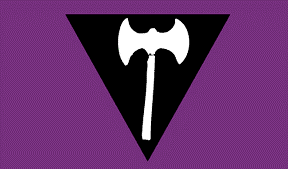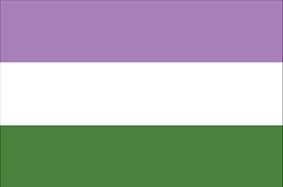International Day Against Homophobia, Transphobia and Biphobia (IDAHOT Day), was created in 2004 to draw the attention of policymakers, opinion leaders, social movements, the public and the media to the violence and discrimination experienced by LGBT+ people internationally.
IDAHOT Day is traditionally held on 17 May annually, and this year the University has decided to put together a week-long event commencing on 14 May to celebrate the newly approved Trans Student Policy, which will come into effect at the beginning of the academic year 2018-19.
The Trans Student Policy was created following an increase in the number of students who identified as trans at the University of Kent. Using guidance from the Equality Challenge Unit, Gendered Intelligence, Stonewall and Old Square Chambers the policy was drafted. The policy received feedback at focus groups organised with trans students at Kent and was approved by the Student Experience Board on 2 February 2018.
In summary the policy outlines the University of Kent’s commitment to the support of trans students, guidance for trans students, guidance for staff, general advice and guidance to support trans students, terminology, action plan for supporting a student during transition, and the legal framework.
Stonewall released a report in April 2018 entitled LGBT in Britain: University Report which found that more than a third of trans students faced negative comments or conduct from university staff in the last year because they are LGBT; three in five trans students have been the target of negative comments or conduct from other students; and one in five trans students were encouraged by university staff to hide or disguise that they are trans.
Taking into consideration these key findings, it is apparent that there is still much more work to be done in ensuring inclusivity of trans students in the University environment. Subsequently Kent Union, in collaboration with the University of Kent, has arranged a programme of events for students and staff for IDAHOT week.
Programme of Events
Trans 101 Training | 15 May
Kent Unions Part Time Trans Officer, Val Dorian, will be giving trans awareness training on terminology, things not to say, questions not to ask, trans myths and challenges faced. If you would be interested in attending, please contact D.C.Worthington@kent.ac.uk for further information.
LGBT+ Mythbuster School Visit | 17 May
LGBT+ Mythbusters will be travelling to Dane Court Grammar School, organised by the Student EDI Officer, to share their experiences with Year 12 students, in terms of their sexuality and/or identity, their coming out process and also about University life in broader terms.
If you are interested in signing up to be a LGBT+ Mythbuster please contact D.C.Worthington@kent.ac.uk.
“Out and Proud” Exhibition | 17 May
The LGBT+ Staff Network has organised an exhibition with and at the Templeman Library. Entitled “Out and Proud”, it features portraits of the Network’s Role Models, together with excerpts from their Role Model questionnaire.
The official opening of the exhibition is 17 May at 16:00, and thereafter will run for 8 weeks. Alongside the exhibition, with the Special Collections and Archives Team at Templeman Library, there will be a section on “Role Models through the Ages”. This section will consist of books by and about LGBT+ people from the library’s collection.
For further information please contact: lgbtstaffnetwork@kent.ac.uk
In Solidarity with Trans Students | 17 May
To celebrate that the Trans Student Support Policy has now passed, Kent Union will be using IDAHOT Day to raise awareness of it. Kent Union will be out on the plaza drawing a massive Trans Flag, and encouraging people to sign a pledge towards the Trans Student Support Policy. Help with colouring in the flag, from 11:00 on the Plaza. For more information: https://www.facebook.com/events/415081282236172/
De-stress Open Mic | 19 May
The Gulbenkian will be opening up their café stage for an Open Mic night that will see spoken word artists, rappers, singers, dance groups and anyone else who wants a stage to perform.
A couple of acts are already booked in for the evening but otherwise it is free to rock up and sign up for a slot on the day. This event is a celebration of student talent, a perfect escape from the seasonal worries that come along with third term exams.
Looking to book a slot? Please e-mail Imogen Dodds at i.dodds@kent.ac.uk
‘Love, Simon’ Screening and Panel Discussion | 20 May
Everyone deserves a great love story. But for seventeen-year old Simon Spier it’s a little more complicated…
He’s yet to tell his family or friends he’s gay and he doesn’t actually know the identity of the anonymous classmate he’s fallen for online. Resolving both issues proves hilarious, terrifying and life-changing.
The screening will be followed by panel discussion with:
Clara Lee (VP – Welfare, Kent Union)
Drew Curry (Representation Officer, Kent Union)
Christin Hoene (University of Kent LGBT Staff Network)
Valiant Dorian (Kent Union Trans Officer)
Victoria Golding (CHASE-funded PhD University of Sussex exploring lesbian migration within the UK 1970-1995).
Chaired by Dr Declan Gilmore Kavanagh, School of English.
LGBT+ Flags | 14-20 May
LGBT+ flags will be raised at the Colleges to show their solidarity with the week. The following flags with be raised in the following locations.
Transgender Flag: Keynes College and Registry (17 May)
Rainbow Flag: Medway
Bisexual Flag: Eliot College
Asexual Flag: Darwin College
Lesbian Pride Flag: Rutherford College
Pansexual Flag: Turing College
Genderqueer Flag: Woolf College
TRANSGENDER FLAG: Keynes College and Registry
The transgender pride flag was created by Monica Helms, a transgender woman, in 1999. The two coloured stripes represent the traditional colours for baby boys and girls and white is for those of intersex, neutral, or other genders.
The flag is intentionally symmetric so that however you hang it, it is in the ‘correct’ orientation. Helms says this was to represent transgender people finding “correctness” in their lives.
The pride flag originally held eight colours with pink placed on top of the red, symbolising sexuality and indigo placed below purple, symbolising spirit. When the flag became popular and widespread it demanded production; pink had to be dropped because it was not commercially available, later seven became six so as to keep the colours even.
“The rainbow is a symbol and celebration of the diversity of genders and sexual orientations. It’s beautiful, all of the colours, even the colours you can’t see. That really fit us as a people because we are all of the colours. Our sexuality is all of the colours. We are all the genders, races and ages.” ~ Gilbert Baker
BISEXUAL PRIDE FLAG: Eliot College
Designed by Michael Page in 1998, the bisexual flag gave the underrepresented bisexual community its own symbol comparable to the gay pride. It had the aim to increase the visibility of bisexuals both among society and within the LGBT community. The colours signify the romantic and/or sexual attraction to multiply genders, your own gender and others.
ASEXUAL FLAG: Darwin College
The asexual flag was created in 2010 and was driven primarily by the desire to have a symbol that belongs to the asexual community. It was agreed upon through a multi-stage vote.
The four colours all have meanings:
- Black: Asexuality
- Grey: Asexuality and Demisexuality
- White: Non-asexual partners and allies
- Purple: Community
LESBIAN PRIDE FLAG: Rutherford College
The lesbian flag features a “labrys,” a double-headed axe associated with early matriarchal Minoan societies and favoured by tribes of Amazon warriors who roamed the area that is now Kazakhstan. The labrys became popular with lesbian culture in the 1970s, but has fallen out of common use since.
The black triangle is a throwback to Nazi Germany, similar to the pink triangle used by the general gay movement. The black triangle denoted “anti-social” behaviour, which included lesbianism.
Although the flag was created fairly recently (1999 by Sean Campbell) it’s not as popular now as it once was, possibly because of the relative unknown of the symbols.
PANSEXUAL FLAG: Turing College
Pansexuality is a recently new categorisation of sexual attraction. The difference between bisexual and pansexual is that pansexuality is an attraction regardless of gender. The colours symbolising blue for male, pink for women and yellow for all.
GENDERQUEER FLAG: Woolf College
The Genderqueer Pride flag was created by Marilyn Roxie in 2010 with help from the Genderqueer internet community. The lavender is a mix of the traditional blue and pink gender colours for people who are a little of both, the green is meant to be the “inverse” of lavender for those outside the binary and the white represents gender neutrality.
For further information on IDAHOT Day click here or contact Clara Lee, VP Welfare: C.Lee@kent.ac.uk
#IDAHOTB







